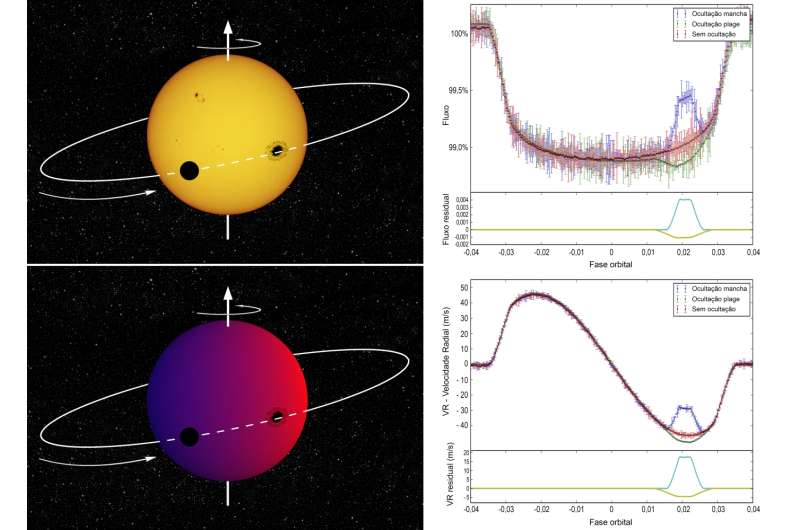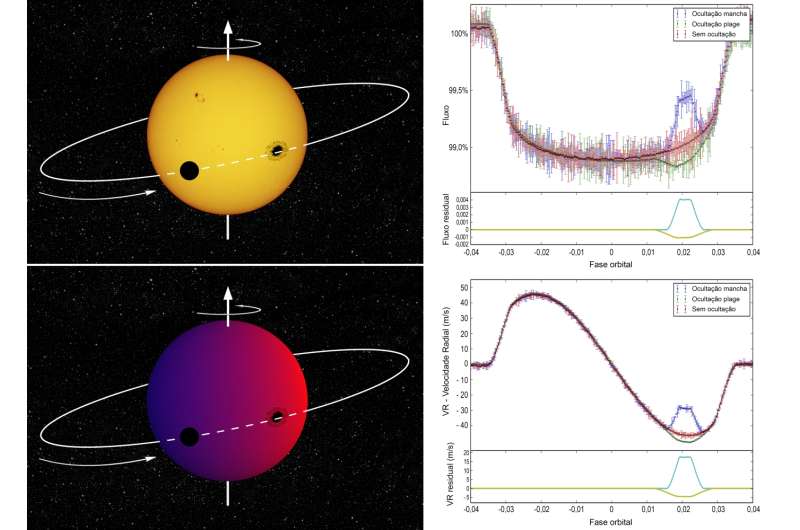Stellar activity can mimic misaligned exoplanets

The occultation of stellar active regions during the planetary transit can lead to inaccurate estimates of the characteristics of these exoplanets, especially the spin-orbit tilt angle. This was the conclusion of simulations made by a team of astronomers from the Instituto de Astrofísica e Ciências do Espaço (IA) in Portugal, and Institute of Astrophysics of Georg-August University of Göttingen, in Germany.
The Rossiter-Mclaughlin (RM) effect has been used to measure the spin-orbit tilt angle in exoplanets, a parameter which can provide crucial information about the planetary formation and evolution processes, and even help to discriminate between different planetary migration models.
Mahmoudreza Oshagh, currently working at the Institute of Astrophysics of Georg-August-University of Göttingen, but developed the work in this paper as a post-doc at IA, commented: "Our results showed that the aligned transiting exoplanets are the ones that can be easily misinterpreted as misaligned owing to the stellar activity. Moreover, our study could provide a viable explanation for the few cases in the literature that obtained conflicting spin-orbit angles, for instance the case of exoplanet WASP-19b".
This study shows that the inaccurate estimation on the spin-orbit angle can reach up to 30 degrees, particularly for the edge-on, aligned, and small transiting planets. The simulations also show that observations in the near infrared are less affected by stellar activity. Mahmoudreza Oshagh mentioned: "These results demonstrate that measurement of the RM effect should be part of the main objective of upcoming near Infrared spectrographs, such as SPIRou, NIRPS instruments with which IA researchers are strongly involved."

Nuno Cardoso Santos (IA & Universidade do Porto) commented: "These study is very important for the analysis of high precision data coming for a whole new generation of instruments, including the high resolution spectrograph ESPRESSO[6], for ESO's VLT."
IA's team is right now at the VLT (Paranal observatory, Chile), installing a part if this instrument.
The article "Can stellar activity make a planet seem misaligned?" was published in the journal Astronomy & Astrophysics (Vol. 593, A25 August 2016, DOI: 10.1051/0004-6361/201628728).
More information: M. Oshagh et al, Can stellar activity make a planet seem misaligned?, Astronomy & Astrophysics (2016). DOI: 10.1051/0004-6361/201628728
Journal information: Astronomy & Astrophysics
Provided by Instituto de Astrofísica e Ciências do Espaço



















